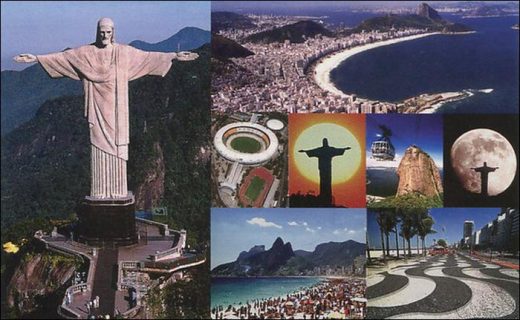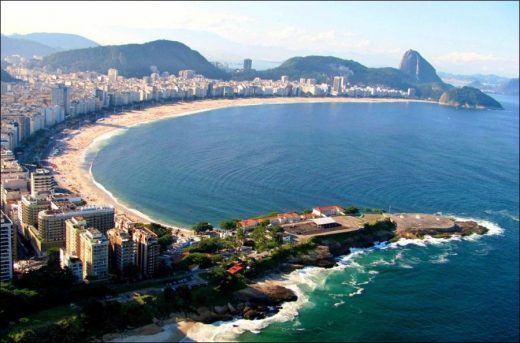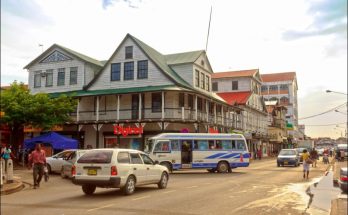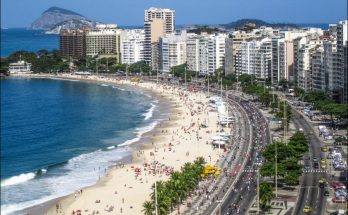His nickname is “Cidade Maravilhosa’ (Marvelous City) of Rio. It gives wonders to those who really want to see. The population of Rio de Janeiro is about 6 million. Not all of the 6 million are hospitable, but the hospitable are the best you can see in your life.
Revenue is injustice has gone to his head. Sharp as a knife. No middle class. For example, you live on the last floor of a 15-storey building near Copacabana Beach. But you have to pull a wire on the balcony. Climbing thieves. It doesn’t sound like a mind. Prison with the most beautiful view in the world.
Or you can see dozens of tents side by side on the road. Decathlon is a publicity guy, so you can stop by the tent. Then you realize that there are homeless people. You walk away with serial steps.
You ask people if Rio de Janeiro is safe. The police cars, which stop every 100 meters, also give confidence, but there is no single institution that is not involved in corruption. Maybe if something happened to you, the police wouldn’t even be there. You’re telling me to be careful anyway. You can’t even take your phone out of your pocket and take a good picture.
Football is loved wildly. Match days are public holidays. There are no yellow, blue or green places in the country. Buses don’t run in the afternoon. Especially if they win, you see it. Watching the match alone and celebrating the win alone is considered one of the biggest disasters that can happen in Brazil.
These are the men who declared Pele national wealth so that Pele could not leave the country. Imagine that the historical artifact will be considered smuggling though Pele is transferred to another team.
Christ, the Redeemer Statue
In the top of the mountain is installed Christ the redeemer, one of the most wanted touristic sides of Rio de Janeiro. Biggest and most famous scripture Art Déco of the world, the Christ statue started to be planned in 1921 and it was developed by the engineer Heitor da Silva Costa over 5 years of job, from 1926 to 1931, the opening year of the monument.
It’s located at Parque Nacional da Tijuca, 710 meter above the sea level, where anybody can appreciate one of the most beautiful views of the city. Over all 220 steps that lead to the famous statue feet, it was elected one of the Seven Wonders of the World made by formal voting in 2007 by the Swiss Institution New 7 Wonders Foundation. The monument is accessible by train, van or car.
To get into the monument, there’s a nice ride by train that, during 20 minutes, it crosses Mata Atlântica until Corcovado’s top. Making an easy access to the visitants, three panoramic elevators and four escalators were built. The visual is amazing; it makes an unmissable programme for those that visit the city.
Beaches in Rio de Janeiro
The beaches in Rio de Janeiro come to mind when you think of 3. Copacabana beach, Ipanema Beach and Leblon Beach.
The most famous is Copacabana. But I think Ipanema is the most beautiful. Copacabana sometimes had a security problem. Ipanema and Leblon beaches are more luxurious hotels. If you buy coconut water from the kiosks on the beach, you will be like a Survivor contestant with a Premium membership.
All the beaches are next to each other. You can reach them by walking. I tried to swim, but it was too choppy. People like me who grow up in the Aegean will throw shit. You see more people surfing. You can enjoy surfing if you can.
Pão de Açúcar
Some compare it to cut sugar, some to grave stone. Those who gave this name likened sugar cubes, which means sugar cubes. Two kinds of transportation. The first is the cable car. You give about 80 pounds to ride. 50% discount if you have an international student card. First the Morro da Urca is the first hill that stops by the cable car. Then Pao de Açucar.
The other alternative is to walk again. Walk a little further from where the cable car tickets are purchased. You will see a door. Continue from there, follow the signs. For about 45 minutes, you will climb the incredibly steep steps. The road is smoother than the Statue of Jesus. They made wooden steps. I left the gras here and chose the walking path again. I’m breathing through machines right now. It didn’t affect me as much as Mount Corcovado, but this is another landmark of the city. If you have money, you can buy a helicopter tour and walk around Rio skies. Don’t ask if you did it, the answer is obvious.
Maracana Stadium
On July 16, 1950, there was an event in Brazil that was enough to gather 200,000 people in the same place. In the final of the World Cup in 1950, 200,000 football fans staged the world’s largest stadium. Brazil’s winning the match was considered to be certain. 47. Brazil’s goal from the minute confirms this. However, Uruguay defeated Brazil after winning 2 goals and won the cup for the second time. Dozens of people committed suicide after the match. A few weeks later, the Brazilian goalkeeper was killed.
The importance of this stadium can not be explained only by football. It is a kind of football lovers’ cabaret and a place that has witnessed history. Do not be concerned about football, it will be incomplete if not visited Rio travel.
Ticuja National Park
This is a park where you can see great views of the city and also have great walking routes. I haven’t, and I have no idea why I didn’t. I have spent my entire South American trip experiencing this regret. There is a hill called Pedra de Gavea. It is possible to see the best view of the city from here. It’s possible. I can only tell from the photos because I didn’t go.
Lapa – Santa Teresa
The famous Rio Carnival, the world’s largest carnival, takes place in February in this region. Except for the carnival, this town is actually the center of the city. So there’s always something to do. Entertainment venues are usually located here. You can hang out in this area whether you want to touristic or more local places.
Favela Show
When you come to Rio de Janeiro, you can see the fireworks exploded at night and say, a Oh, what fun they have, what fun people ”. Do not call. These fireworks are thrown from the favelas to inform the shipment of drugs. If you’ve seen Cidade de Deus, you’ll have a rough idea of what they’re like. Places where 90% of the people live in poverty and engage in illegal work.
A few of them have been cleaned and secured for the World Cup and the Olympics, but most are still dangerous. Tour companies are organizing tours to several secure favelas. I’m one of those who think that getting on a bus to see people’s poverty is no different than doing a safari. That’s why I didn’t. If you call the favela in Adana too. Kiremithane’ye or Hurriyet neighborhood, let’s take enthusiasts.
Visits: 301




